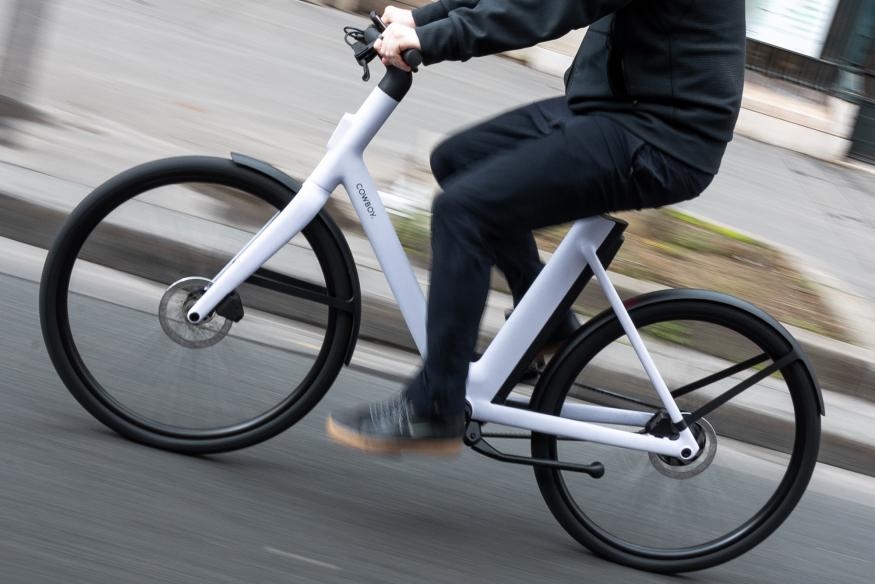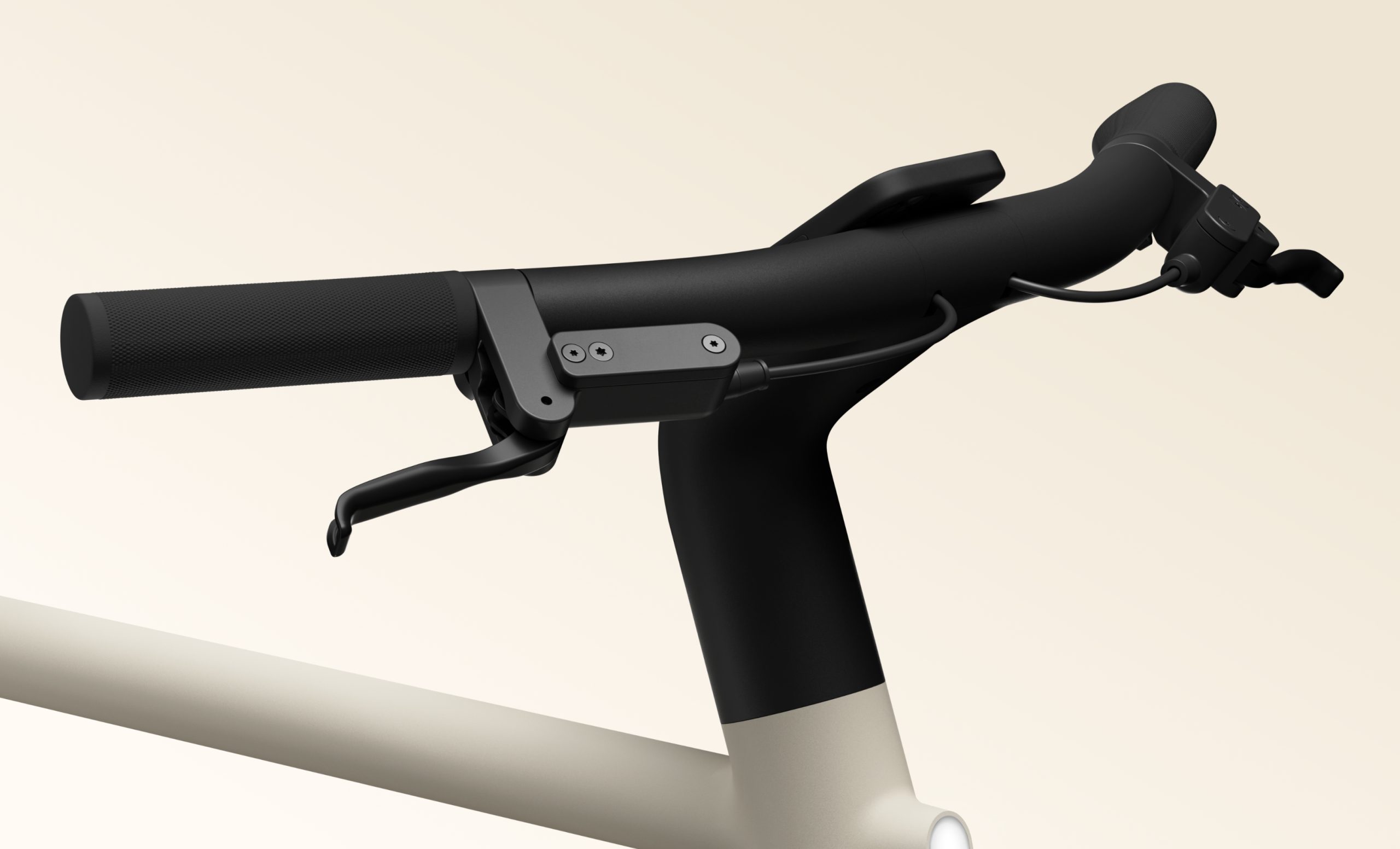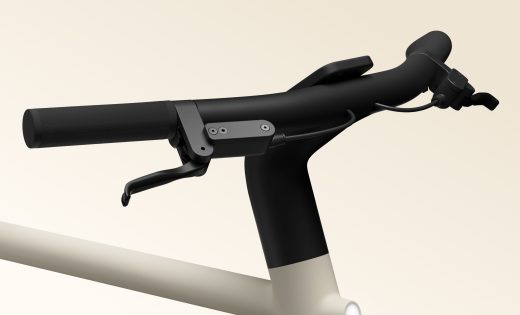Cowboy Cruiser e-bike offers a more upright ride
Cowboy’s ‘Adaptive Power’ update breathes new life into its flagship bike
When Cowboy, a premium European e-bike company, invited the media to an event in Paris, France, it faced some unexpected challenges. Along with torrential rain, there also were strikes and protests against changes to the country’s pension system. And then the big reveal was… not a new bike. Instead, the announcement was three springtime color options for the Cowboy 4‘s step-through (ST) model plus Adaptive Power, a software upgrade coming to Cowboy 4 bikes this month. So when I met the company’s execs, I already had my question: Where’s the new model?
But before I sat down to speak with them, I was able to try out Adaptive Power, touring a few blocks and dipping down and out of Parisian car parks. Would this smarter e-bike (with the same motor) translate to any tangible improvements? Fortunately, yes. Adaptive power works by tapping into the e-bike’s accelerometer and other sensors, based on the rider’s weight, momentum and other factors – even wind. The new feature adjusts the motor’s power without the need for gears or tapping a boost button. The sensors also seemingly detect inclines as soon as your front wheel hits them, increasing motor assistance. The update taps into the same sensors and tech already used for crash detection.

According to Cowboy, the e-bike should offer equivalent battery life between the two iterations, as the motors will likely work more than the last version when the bike needs more power, but also work less when it doesn’t. If you’re riding an updated Cowboy 4, you won’t be able to return to the previous system, but using the app, you can choose between adaptive and eco modes, with the latter offering reduced assistance.
I was able to compare the C4, both with and without the feature, and the biggest improvement from Adaptive Power was how it kicked in at the perfect moment while accelerating from stationary. That’s not to say the Cowboy 4, pre-Adaptive Power, was slow, but it felt smoother and more responsive – it’s impressive for a single-gear bike. Previously, the bike’s motor would respond to your pedal pushes. This time it takes in more information to decide whether to boost.
While that was the most convenient benefit, there’s also a tangible improvement when tackling hills and inclines. With Adaptive Power, steep hills demanded a bit of pedaling but were surmountable. Downgrading to a bike without Adaptive Power – but the same motor with 45 Nm of torque – it’s a journey on the struggle bus. This was a common complaint from Cowboy 4 riders, with several saying that hilly environments were difficult to tackle, even with electric support. This new feature seems to address that, judging by my brief ride on the updated Cowboy 4. (If Cowboy is looking for what to improve when it eventually gets to its fifth-generation bike, this city rider would appreciate a more comfortable saddle.)
This update plays to the Cowboy 4’s design, too. Unlike many e-bikes, there are no controls to tap directly into the electric motor. It’s meant to look (and ride) like a normal push bike and that’s what it does. The Cowboy 4 is also, still, a few kilograms lighter than VanMoof’s latest e-bike, its most comparable rival. Both are premium e-bike options with similar pricing and features, but if you’re lifting your bike up stairs, or into buildings, it’s worth considering.
While Adaptive Power has been in beta testing with users before now, the official launch coincides with three new color options of the Cowboy 4ST. While it’s an impressive way to upgrade the e-bikes of existing users – and do it without having to take it to a service center– these are the same bikes that first launched in 2021.
Until now, Cowboy has iterated fast, with new models arriving at a similar cadence to flagship smartphones. We reviewed its first bike in 2019, which wasn’t long ago. But there are a few reasons for the company to stick with the Cowboy 4.
A lot of e-bike tech will not change hugely in the next few years. Barring incremental efficiency updates, the motor inside most e-bikes likely won’t see generational updates. I also wonder how existing Cowboy e-bike owners see the company’s updated models, having spent thousands on an e-bike 18 months earlier, only to see it replaced so soon. So why no Cowboy 5? For Cowboy, CEO and cofounder Adrien Roose told me the focus is on improving quality, efficiency and all the things that come with scaling up to sell more bikes. The C4 and C4 ST both remain priced at around $3,000, depending on region, and the challenge is getting e-bike prices low enough for wider-spread adoption.

The company has opened up flagship stores in Germany, Belgium and France – the countries Cowboy is intently focused on, and where it sells most of its bikes. So far it’s sold over 50,000 bikes, globally. But while the C4 is available in the US (and being a company called Cowboy), earnestly targeting the American market remains a future challenge. Roose told me they’re in “learning mode” regarding the US. The plan appears to focus on keeping the company healthy and profitable. Roose added that he believes that Cowboy should get to that point by next year. Maybe they’ll celebrate with a new bike?
(25)



